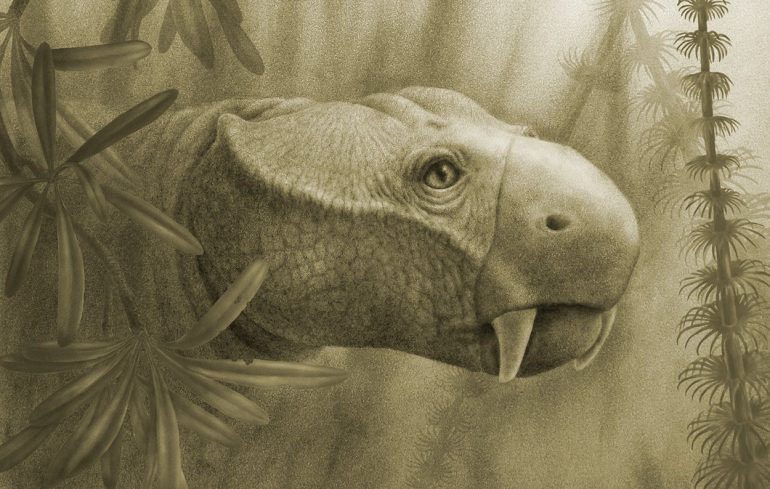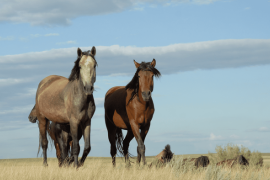The various animal species living today – whether elephants, walruses or warthogs – evolved independently of each other – but only in mammals. but why? Researchers have now clarified this with the help of fossils from primitive relatives of mammals, a group of animals known as Dicynodontia. According to this, the prerequisites for the development of teeth were that tooth change was rare, the connection between the teeth and the jaw was made of soft tissue and the teeth continued to grow throughout life – features that can only be found in mammals today. .
Tusks serve very different functions to animals living today: they serve as a defense against enemies, as a tool for digging, can impress potential sexual partners and sometimes even aid in locomotion. can, for example in walruses that pull themselves out of the water with their teeth. How teeth evolved independently of each other in different animal species, what requirements had to be met, and why only mammals have teeth is still unclear.
Primeval Tusk Carriers
A team led by Megan Whitney of Harvard University in Cambridge has now traced the evolutionary origins of teeth. “To do this, we had to first define the term tusk because it is surprisingly vague,” Whitney says. By their definition, it is only a true tooth if it erupts from the mouth, grows throughout life and contains only dentin, that is, it is not covered by tooth enamel. The last point distinguishes teeth, for example, from rodents that grow back to life, but are coated on the front with tooth enamel.
The researchers selected the oldest known animal in which tusk-like structures were identified as the object of investigation: Dycynodontia. Dicynodontia lived from 270 to 201 million years ago, so they originated before dinosaurs. The group included many species, some as large as a rat and some as large as an elephant. Although they were not mammals themselves, they are more closely related to today’s mammals than to dinosaurs and other reptiles. Dicynodontia (“two canine teeth”) got their name because of an unusual feature: two long, tusk-like canines protruding from the mouth like the beaks of most representatives.
Not all teeth were “real”
Whitney and her colleagues examined fossil teeth from 19 specimens of Dicynodontia from South Africa, Zambia, Tanzania and Antarctica, representing ten different species. With the help of micro-computed tomography, they analyzed on one hand how the teeth were attached to the jaw and whether there were any signs of continued growth. On the other hand, they examined wafer-thin slices of teeth for their creation.
They found that not all of the teeth examined were real teeth. “Although dichonodontal dogs appear morphologically similar, not all of them had teeth in the sense of our definition,” the researchers report. In some specimens, the tooth was attached to the jaw. Continuous development of the tooth is possible only if the tooth and jaw are connected only by connective tissue. In other specimens, the teeth were covered with tooth enamel – which makes the teeth more resistant, but also prevents renewal, as tooth enamel, unlike dentine, cannot be regenerated. “Enamel-coated tusks have a different evolutionary strategy than dentine-coated tusks,” explains Whitney.
unique combination
Only in the evolutionarily small species of Dycynodontia were true teeth discovered by researchers. These apparently evolved independently of each other in many species. This was accompanied by the fact that Dicynodontia markedly reduced the number of teeth changes – unlike other reptiles, which then and now change their teeth. “Less tooth change increased the selection pressure to develop more durable teeth,” explained the researchers. “A soft tissue connection between the tooth and the jaw enabled the tooth to grow continuously.”
This combination, unique to mammals today, formed the basis for the evolution of teeth. “This may explain why modern mammals have acquired distinct and repeated teeth,” the researchers said. “Our study shows that Dysinodontia evolved millions of years before the first mammals evolved, in similar evolutionary ways and possibly in response to similar selection pressures.”
Quell: Megan Whitney (Harvard University, Cambridge) et al., Proceedings of the Royal Society B, DOI: 10.1098/rspb.2021.1670

Web guru. Amateur thinker. Unapologetic problem solver. Zombie expert. Hipster-friendly travel geek. Social mediaholic.





